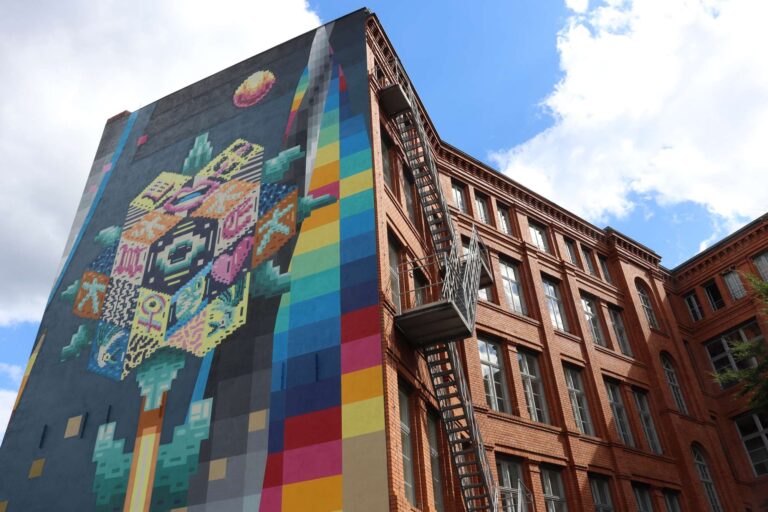
Margareta Matache is from a Roma family in Romania. In the early 1990s, following the fall of communism in Romania, her father began working as an activist in the local Roma movement. Activists gathered in her home near Romania’s capital Bucharest and listened to stories of the violence and discrimination the Roma people experienced.
This interview was originally published on August 22, 2021, in Lazo Magazine’s weekly newsletter. It’s a conversation between Lazo Magazine’s founder and Editor-In-Chief, Cristina Maza, and Margareta Matache.
Roma people’s houses were burned. They were attacked and killed. Margareta’s father tried to work as a mediator in the community.
“I got to be a part of this in a very natural way,” Margareta told me about the activism of her youth.
Over the years, Margareta grew up to become a student activist working for Roma rights in her country. She later rose to become the director of a Roma’s rights organization in Bucharest and documented cases of discrimination and abuse against the Roma people.
After completing her Ph.D., she helped launch Harvard University’s Roma program using participatory action research methods.
We discussed structural racism against Roma people in Europe, the current research into Roma communities worldwide, and the main issues facing Roma today.

Cristina: What is your current assessment of the academic literature about Roma people and research in the field?
Margareta: There is a growing critical Romani studies field. Many of us look critically at what has been written about us. From methods to interpreting data, there are a lot of racist conclusions and assumptions.
One example was a survey. One of the questions asked if Roma parents value education. The answer was overwhelming ‘yes.’ But out of all of the questions asked, the researchers assumed that the parents were lying and giving the response the researchers wanted to hear. So why assume that Roma lied about only that one question?
Many things are not overtly racist but include unconscious bias. There is so much to say about research and objectivity.
Cristina: Can you tell me more about the work you’re doing now?
I’ve been at Harvard for 9 years, and we try to conduct Roma-related research. We collect data, but we are also trying to place Roma in current conversations about race and racism, enslavement, reparations, and so on.
We started work on reparations six or seven years ago with the idea that Roma enslavement in Romania, for example, hasn’t been included in the literature on slavery or reparations. The Roma victims of the Holocaust have not been acknowledged as much as they should have.
So we started this global conversation with the idea of creating a joint advocacy movement for reparations. We will publish a volume called Time for Reparations with the University of Pennsylvania in September. It takes a global perspective on reparations, and it includes two chapters on the Roma.
We’re also trying to work with the Roma global diaspora, so reaching out to Romani Americans.
Cristina: How many Roma people are in the United States?
Margareta: It’s hard to say. Estimates put the number at somewhere between 1 million and 1.5 million. But there is no suitable method to count because many identified with their country of origin. Many who have been here for one generation or two or three maintain the Roma language at home, but they don’t identify as Roma when they go outside of the home.
Some go to the same churches that preach in the Romani language. There are many in California. In addition, Texas, New York, and Connecticut have communities.
Cristina: If you could pinpoint the main issues in the Roma community that are being addressed by activism and research, what would they be?
Margareta: Anti-Roma racism is the main umbrella issue. But my goal is to unpack and deconstruct the many manifestations and pillars of anti-Roma racism.
By looking at manifestations and pillars, we can place the experiences of oppression that the Roma face within the larger conversations on race and racism.
For instance, a lot of our work looks at segregation in education. It’s a reality across many countries in Europe.
It’s not segregation by law but by practice. But, unfortunately, in many ways, that’s something we can also see still in the United States.
We did a study focusing on the Czech Republic, Hungary, Croatia, Romania, and Bulgaria, and we looked at case law.
The European Court of Human Rights had a few cases on segregation in education, including a very famous one from the Czech Republic. The court judgment said that Roma children were placed at a high rate in special schools and misdiagnosed due to racial bias.
That’s a phenomenon in various countries. The Open Society Foundations had a report on the placement of Romani children in special schools in Serbia, too.
There was an interesting study from the U.K. They looked at the experience of Roma children who came to the U.K. with their families from the Czech Republic and Slovakia. They were in special schools, but after arriving in the U.K. and being placed in an inclusive school system, they had the same level of performance as any other child in just a few years.
We look at this segregation as an overt manifestation of racism.
We also look at police abuse.
In our studies of Romani Americans, one of the clear manifestations of anti-Roma discrimination in the United States is racial profiling.
There are many experiences of that here in the U.S., but also in Europe. For example, last month, a Romani man was killed by the police in the Czech Republic. A policeman knelt on his neck for six minutes. His name was Stanislav Tomáš.
There were many protests. Not at the same level that you see in the United States, but there are many cases of police abuse.
We also look at the connections between racism and health and how racism functions as a trigger for health inequities and as a stressor in itself.
Cristina: Is the experience of Roma people similar from country to country, or does it vary greatly?
Margareta: It varies greatly from continent to continent. The experiences of Romani Americans are different from those of Roma people in Europe.
The policies against Roma in Europe have always been more targeted. In Europe, we deal with structural racism. Most of the laws and policies don’t even include Roma, they are very white in nature.
In the United States, the targets of structural racism are other communities, including Black Americans and Native Americans.
Roma faces discrimination in the U.S., but there is no intentional, continuous mechanism to keep Roma under oppression. However, you will notice that in some of the laws in the United States, at the beginning of the 1900s, Roma, or “gypsies,” were prohibited from entering the United States. So many people who came to the United States just claimed they were nationals of their countries.
During the Holocaust, when the Nazis took Roma to camps, the information they had was from the official census or other official channels. So many elders in the community started to tell people not to identify themselves to the authorities.
Cristina: Does the experience of Roma differ significantly in Eastern and Western Europe?
Margareta: I think there’s a difference because there are more Roma people in Eastern, Central, and Southern Europe than we see in the North or the West.
In the U.K., for example, you have Roma who were born in the U.K., and they have different experiences from the Roma from Romania or Bulgaria. So you will see this tension as well between Sinti and Roma in Germany.
There are power dynamics. There is some frustration from Romani groups born in these Western countries who have a little more access to wealth and resources. When Roma come from Romania and Bulgaria and beg on the street, the Roma born in those Western countries feel like we ruin their image and cause more racism against them.
There is also some tension over the names we call ourselves. Some subgroups don’t like that we use Roma as an umbrella term. There is also racialized poverty, which you see more in Eastern and Central Europe. So we can’t talk about a homogenous Romani diaspora.
Even in Romania, we have at least 20 subgroups of Romani people with different dialects and some different traditions and clothes. Some get more targeted by violence than others.
Cristina: Has the evolution of the European Union altered the experience of Roma people in Europe at all? Has the ability to move across borders changed the experiences of Roma?
Margareta: When the opportunity came to travel to other European countries without a visa, that made many Roma, together with members of the dominant population, decided to move to different countries.
People traveled to the U.K., France, or Spain. And they did much better. Some would work in construction or fruit picking, the same work that Romanians would do. However, the experiences of their children in school were much different.
But even if you only need an ID and a bus ticket, many Roma people can’t afford that.
That said, France and Italy in the 2000s wanted to start fingerprinting Roma, but the European Commission disagreed.
France had a voluntary repatriation program, and they would give 300 or 400 euros to migrants to return to their countries. Many used that opportunity. They would go back home for Christmas and then come back to France in January.
That was the impetus for the European Union to create the basis for the European strategy for Roma inclusion. It wasn’t because they cared about Roma. It was because these powerful countries were angry and thought there was a problem.
Many of the projects for Roma inclusion weren’t written together with the Roma, so you had these white organizations saying they were going to fix the Roma community, and then nothing happened.
Most EU states agreed to write a strategy for Roma inclusion, but when it comes to implementation they didn’t put any money into it.
Part of the work I do at Harvard is to say the problem is not how to fix the Roma. The question is how to fix policies and practices that are racist in nature.











